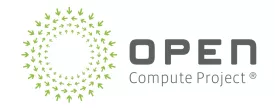Addressing the Colossal Challenge of System Co-Optimization with a Holistic Chiplet Design Methodology
We all know that semiconductor systems are getting more complex, a lot more complex. The burgeoning use of AI in almost everything is certainly accelerating this trend. Faster throughput, lower latency, efficient access to massive amounts of data and the associated communication channels to tie it all together are just some of the challenges faced by chip and system designers. If that’s not enough, the traditional innovation engine for semiconductors – Moore’s Law is slowing. New nodes are harder to get to and the improvement isn’t as large as it has been when you finally do. And extreme complexity means it all doesn’t even fit on a monolithic die anymore. It's something of a perfect storm – a different form of the innovator’s dilemma if you will.
There is a bright spot on the horizon that promises to restore the exponential increases we’ve all come to expect and need. Heterogeneous multi-die design is gaining traction as the way forward. As always, good and bad news here. The good news is that a multi-die approach fueled by a chiplet ecosystem, and a comprehensive design approach can keep the innovation exponential growing. The bad news is that much of the approach is new and is lacking a holistic, cohesive strategy and plan.
To read the full article, click here
Related Chiplet
- Interconnect Chiplet
- 12nm EURYTION RFK1 - UCIe SP based Ka-Ku Band Chiplet Transceiver
- Bridglets
- Automotive AI Accelerator
- Direct Chiplet Interface
Related Blogs
- The Impact of UCIe on Chiplet Design: Lowering Barriers and Driving Innovation
- Cadence Collaborates with TSMC to Shape the Future of 3D-IC
- The Role of Chiplets in Semiconductor Design: A Modular Approach
- 3D-ICs in the Automotive Market: Breaking Barriers with AI-Driven EDA Tools
Latest Blogs
- 3D-IC Market Outlook: Technology Roadmaps, Readiness, and Design Implications
- Cadence 3D-IC Success Stories: Faster Bandwidth, Lower Power, On-Time Tapeouts
- 3D-IC Test and Reliability: KGD Strategies, Access Architecture, & Failure Mode
- 3D-IC in AI, HPC, and 5G: Bandwidth, Latency, and Energy per Bit Advantages
- Bosch and the chiplet revolution: Enabling software-defined mobility
